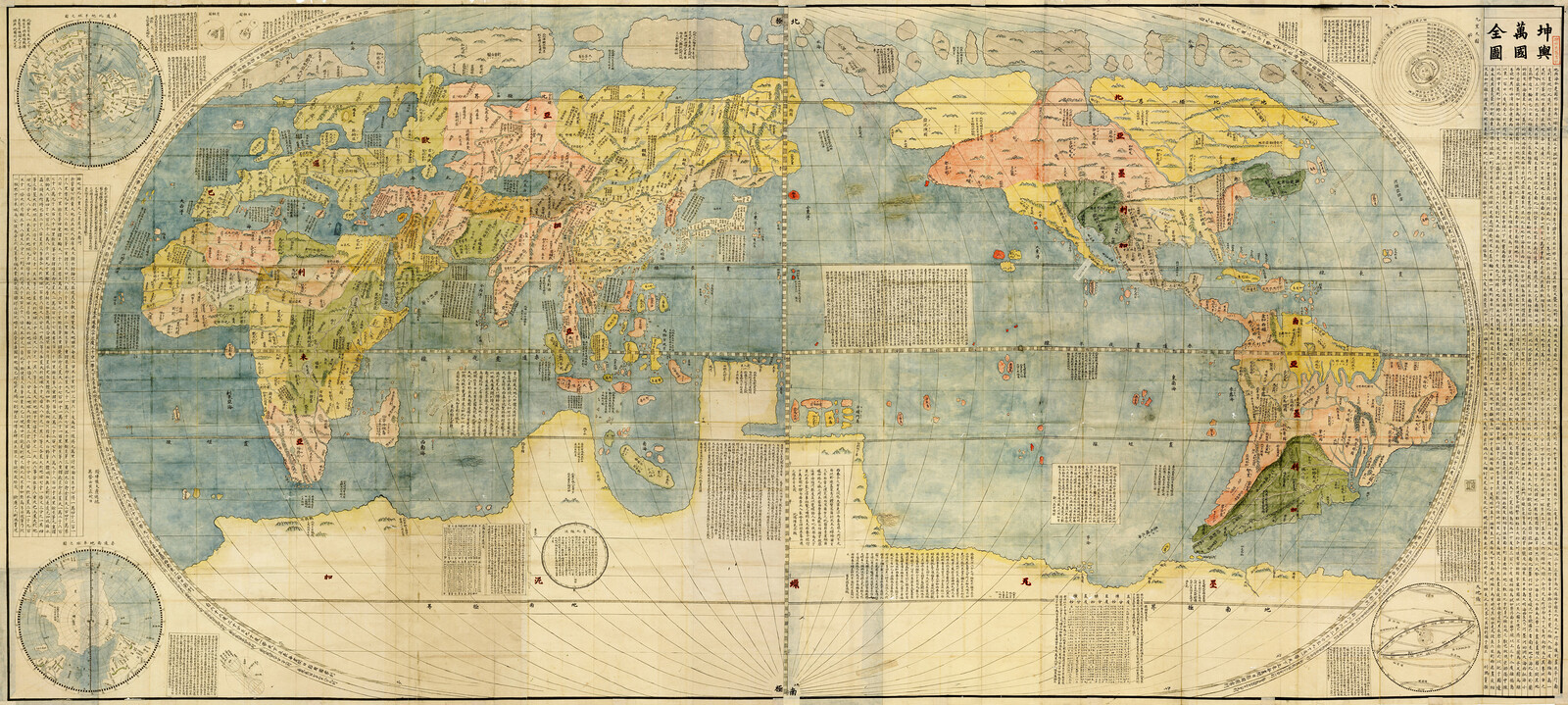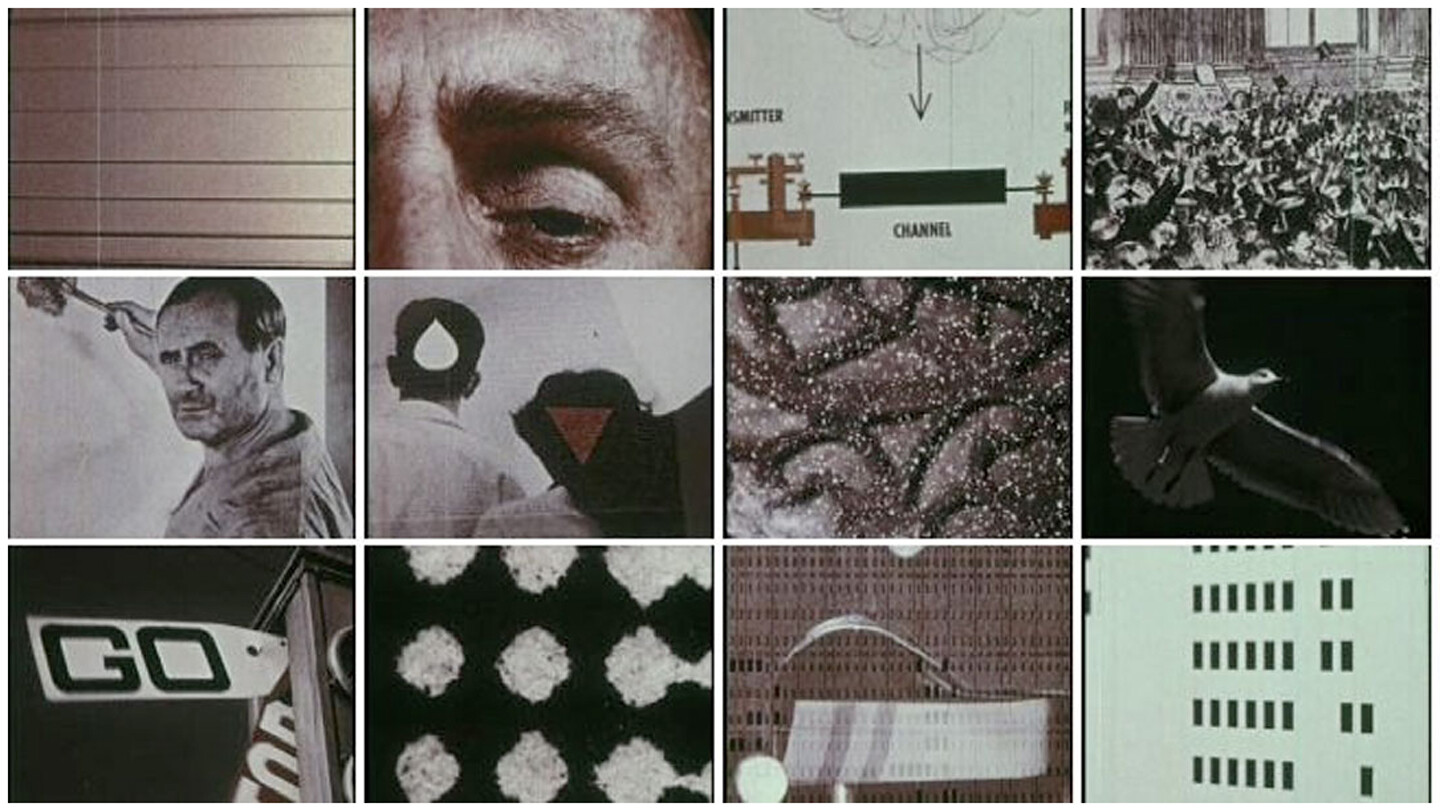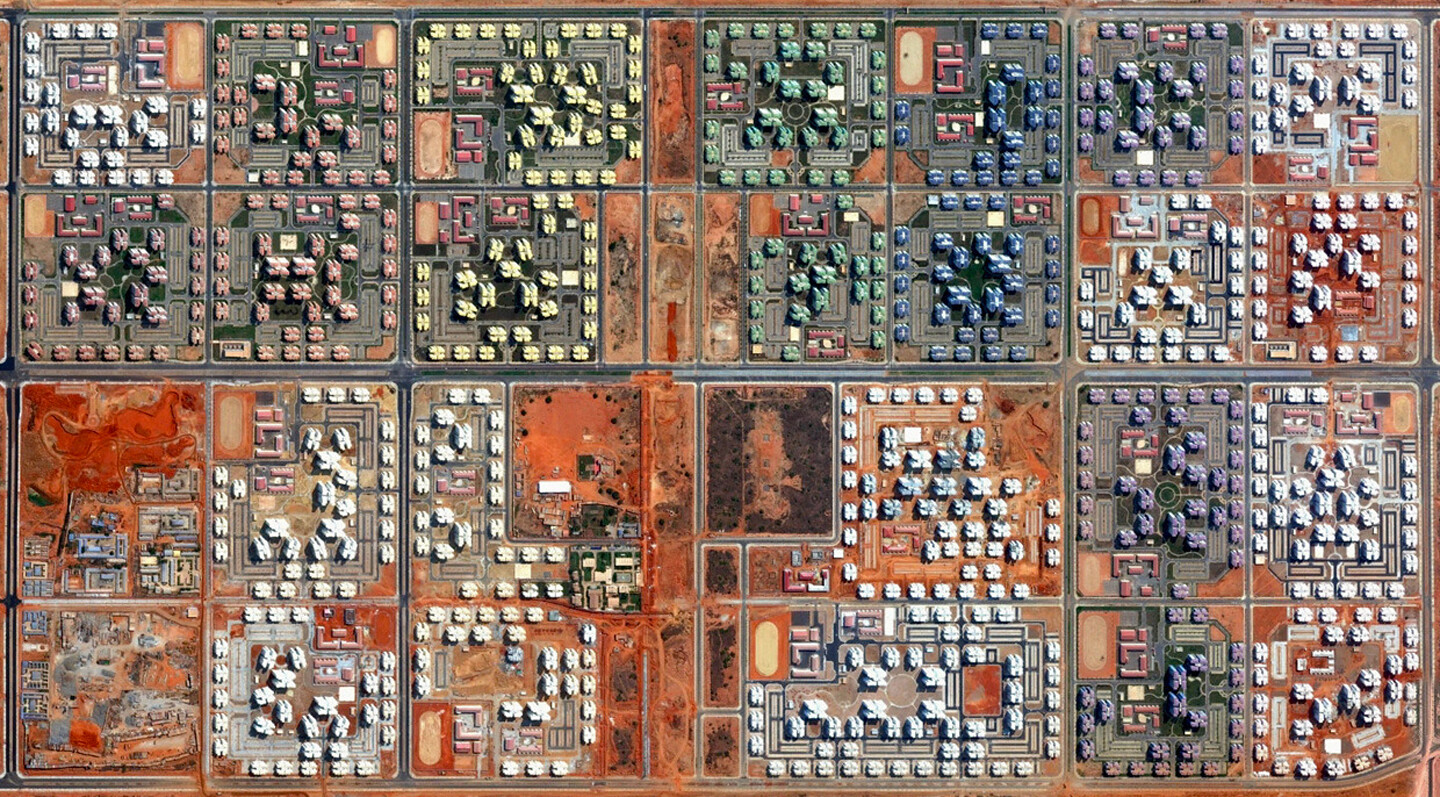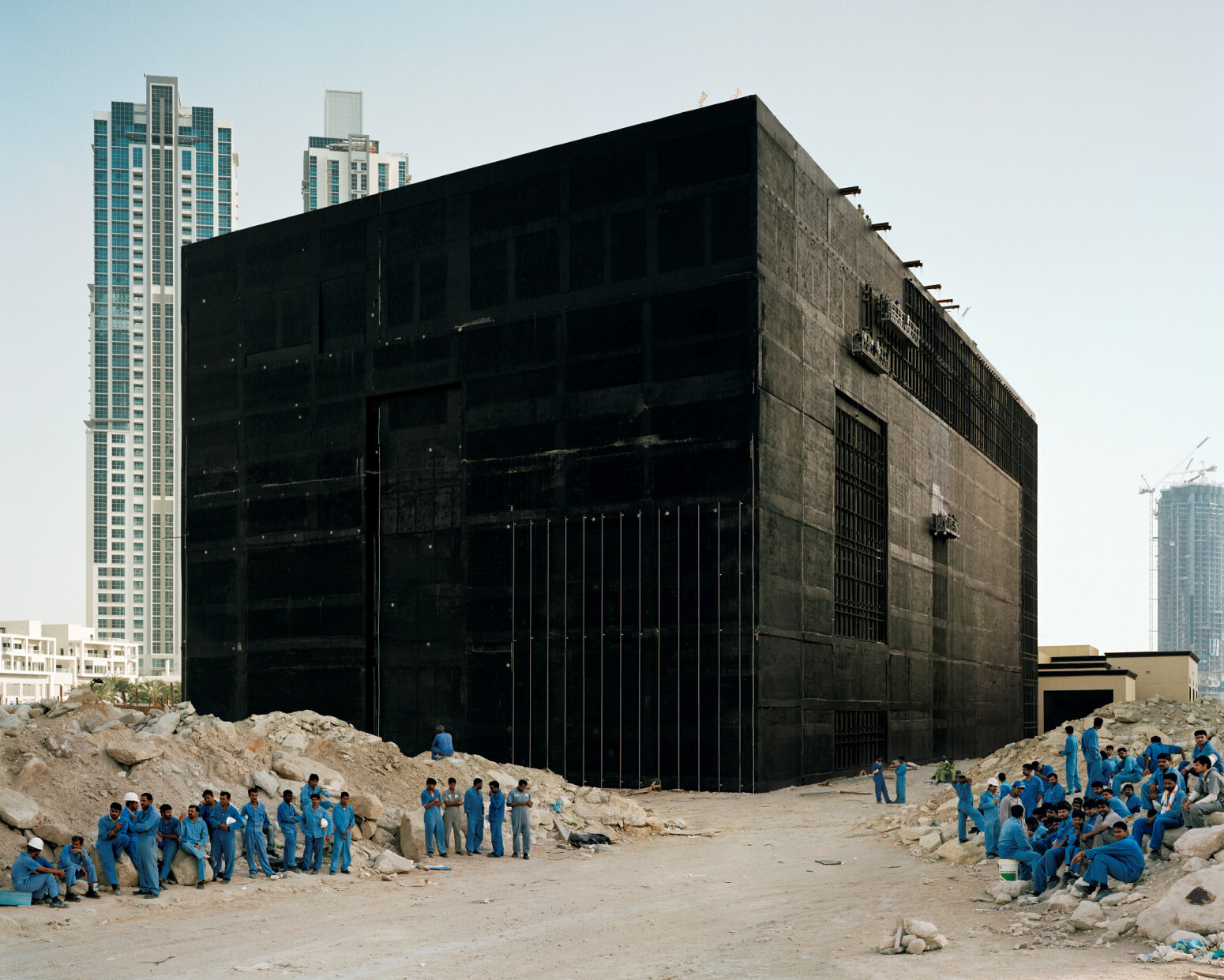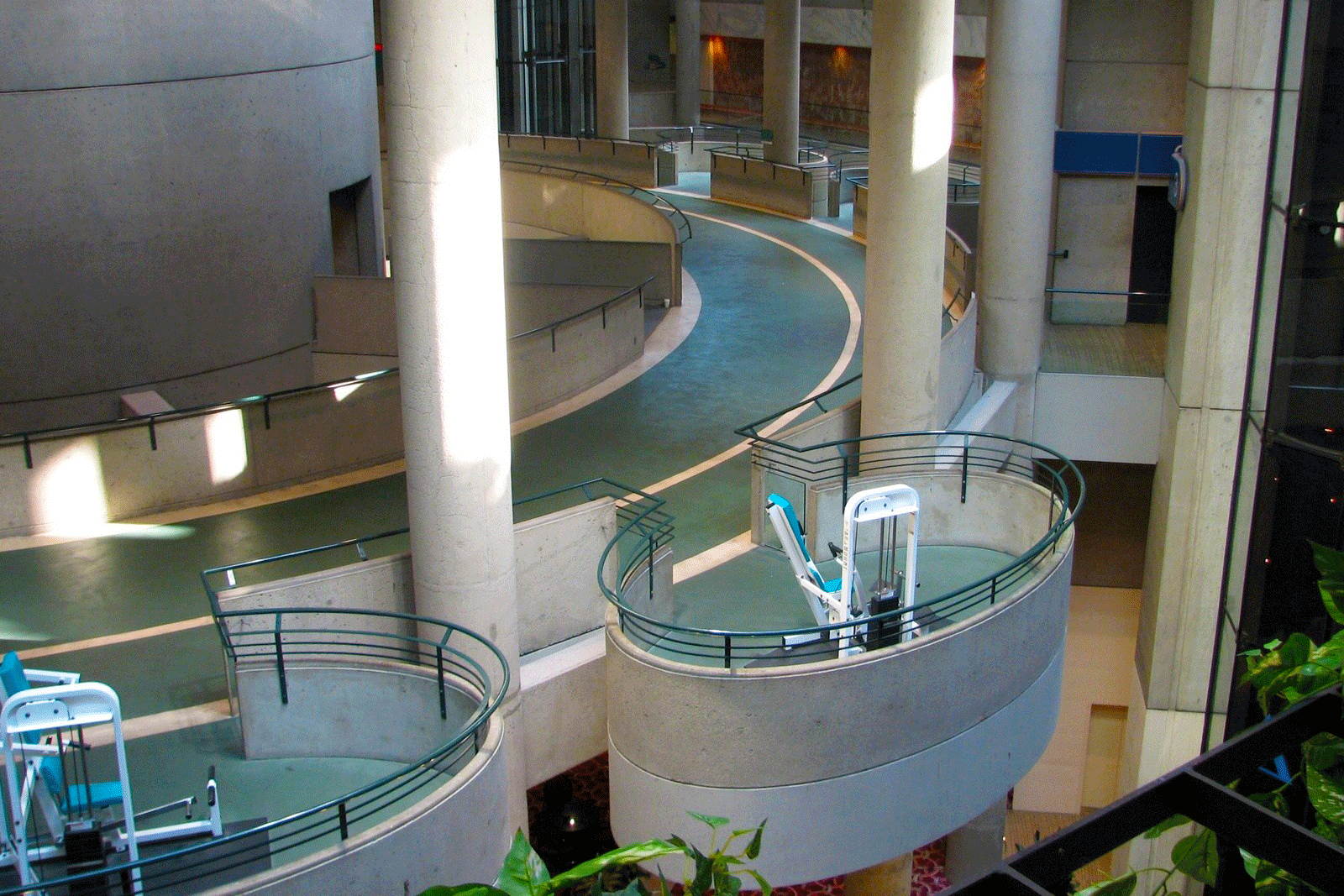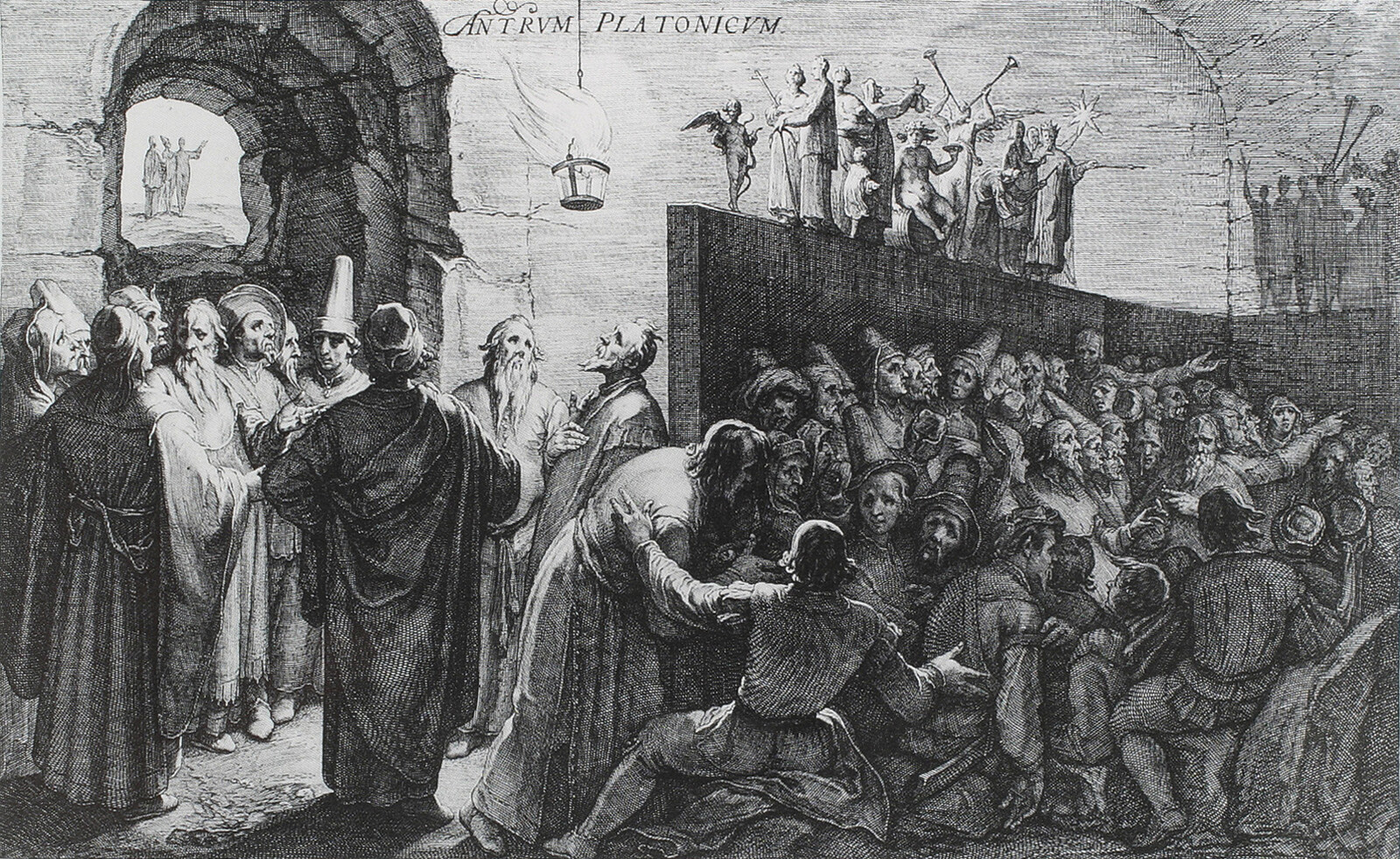This syllabus sets canonical architectural histories and theories in dialog with non-canonical texts that challenge, renegotiate, and/or otherwise expand the ethical, ontological, and disciplinary perspectivity of the Western architectural canon. In doing so, it addresses critical global issues within architectural discourse and practice today. A central premise to the syllabus is that architecture’s autonomy—an autonomy that, if it exists at all, is often a product of colonial grand narratives that discipline architecture’s boundaries against its non-European “Others”—is itself multifaceted and contingent, and that its globality is a product of complex geopolitical forces, socio-political relations, and contradictory histories that require deep theoretical analysis to unpack. The “canon,” in other words, exists in relation to what it excludes, and what it excludes is rich theoretical territory to be explored. Navigating this territory, we acknowledge the right for a canon to exist while rejecting its exclusion of indigenous and non-western voices. Doing so will allow us to disrupt the distance between canonical and non-canonical architectural discourse, to open new possibilities for old ideas, and to rethink the scope and agencies that architecture encompasses in the twenty-first century.
Three separate yet overlapping registers of inquiry—the ethical, the ontological, and the disciplinary—structure what follows. To the extent that these registers are internal to architecture, they help us (re)define and (re)trace its boundaries: there can be no architecture without power, aesthetics, and disciplinary convention. To the extent that they are external to architecture, they open up those boundaries to a range of socio-political, environmental, and spatial/formal territories that are either recurring in architectural discourse or traditionally seen as operating discretely, on the periphery, or under the radar. But whether from within or without, this syllabus takes for granted that architecture—as a theory and a practice, as a way of negotiating the present and imagining the future, as a product and producer of history and contemporaneity—is motivated by ethical positions on what the world could and should be like, philosophical positions on how the world exists, and disciplinary positions on what architecture does to/in the world. In this sense, architectural theory draws history in its own image (for better or worse) and operates as a representational medium that brings the world into and out of view.
The syllabus thus progresses, albeit in many small loops as opposed to a single straight line, from the conditions that precede architectural design toward the question of architectural design itself. Along the ethical register, we ask: “what should or could the world be?” Implicit in this question is a critical position toward the status quo. In order for architecture to be a line of defense against neoliberalism and its global crusade of social, economic, and environmental injustices, we must learn to “see” the world differently and reimagine architecture’s agency beyond the building scale to include politics more broadly, ranging from the body to the planet. Along the ontological register, we ask “what is the world as we find it and how does it exist?” Burdened by the weight of its own history, architecture has long sought to define itself as a frontier practice that rationalizes “savage” wilderness along a clearly defined Nature/Culture axis that privileges Western anthropocentric conceptions of gender and nature (white human bodies, heterosexuality, masculinity, grids and ideal ratios, Christianity, clean air, green nature, etc.). But what happens to architecture when it confronts alternative, queer, and/or non-western ideas about nature? Might it be most ecological in its very artificiality? Along the disciplinary register, we ask, “what does architecture do in the world?” In what ways do its disciplinary boundaries expand and contract in relation to the ethical and ontological questions raised? For that matter, what tools, methods, and conventions does architecture offer to recast those very questions?
The Ethical, Session 1: Perspective / Perspectivity
In order for architectural theory to gain contemporary global relevance, it must regain (and maintain) its historical meaning as both observation/contemplation (theōria, theōros) and theater (theā). Whereas the former gives the viewing subject a certain agency over the object viewed, the latter shifts agency to the means (or medium) of framing, performing, and/or viewing. Whether through writing, painting, planning, or building, theory is always projected in response to thought and imagination, which in turn, are always shaped by perspectivity. If thought and imagination are historically situated, the possibility of critical thinking in any epoch depends upon the paradigm or episteme by which seeing and thinking is constituted. By understanding that knowledge (and ways of knowing) is historically situated, we can see the contingency of thought over time, and thus posit new ways of knowing in the future.
Canonical Readings
‧ Hubert Damish, The Origin of Perspective (Cambridge: MIT Press, 1994)
‧ Erwin Panofsky, Perspective as Symbolic Form (New York: Zone Books, 1996)
‧ Jonathan Crary, Techniques of the Observer: On Vision and Modernity in the 19th Century (Cambridge: MIT Press, 1992)
‧ Friedrich Kittler, Optical Media (Cambridge and Medford: Polity, 2009)
‧ Beatriz Colomina, “Le Corbusier and Photography,” Assemblage 4 (October 1987): 6–23.
‧ John Johnston, “Machinic Vision,” Critical Inquiry 26, no. 1 (Autumn 1999): 27–48
Non-Canonical Readings
‧ Hăo Dàzhēng, “Chinese Visual Representation: Painting and Cinema,” in Cinematic Landscapes: Observations on the Visual Arts and Cinema of China and Japan, eds. Linda C. Ehrlich and David Desser (Austin: University of Texas Press, 1994), 45-49.
‧ Hans Belting, Florence and Baghdad: Renaissance Art and Arab Science (Cambridge: Belknap Press, 2011.
Case Studies
‧ Fra Carnevale, The Ideal City, ca. 1480–1484.
‧ 15th century maps of the world, such as Kanigo World Map (1402), De Virga World Map (1411-1415), Bianco’s World Map (early 15th century), Genoese Map (1457), Martellus World Map (1490), and Behaim’s Erdapfel Globe (1492).
‧ Plans of Spanish colonial cities in the Americas (Laws of the Indies, 1542)
‧ Ángel Rama, La Ciudad Letrada (The Lettered City), 1984.
‧ Shen Zhou, Lofty Mount Lu, 1467.
The Ethical, Session 2: Humanism / Posthumanism
What and who centers the perspectivity of architectural theory? For that matter, what and who is architectural theory for? Since at least the Renaissance, humanist thinkers and writers have positioned architecture’s value systems (its uses, ordering mechanisms, modes of communication, registers of meaning, etc.) within existential and ontological worldviews that reinforce the dominance of Western European humans over the rest of the earth. Along this line, to be “human” is to discipline and enclose humanity (or ideas around humanness) against a non-western, savage, and/or posthuman world. Yet this humanist/posthumanist axis or frame is negotiated differently along non-western thought models and worldviews, historical and contemporary alike. And within the Anthropocene, an age during which the environment itself has become an object asserting its own agency (as opposed to a passive ambience waiting to be dominated), architecture must renegotiate its ability to articulate the boundaries, thresholds, and enclosures that structure relationships between humans and their “others.”
Canonical Readings
‧ Christopher Alexander and Peter Eisenman, “Contrasting Concepts of Harmony in Architecture,” Lotus International 40 (1983): 60–69.
‧ Peter Eisenman, “Postfunctionalism,” in Architectural Theory Since 1968, ed. K. Michael Hays (New York: Columbia University Press, 1998).
‧ Dalibor Vesely, “The Nature of Communicative Space,” in Architecture in the Age of Divided Representation: Creativity in the Shadow of Production (Cambridge: MIT Press, 2004), 43–110.
‧ Kenneth Frampton, “Prospects For A Critical Regionalism,” Perspecta 20, (1983): 147–162
‧ Mark Wigley, “Deconstructivist Architecture,” in Deconstructivist Architecture, eds. Philip Johnson and Mark Wigley (New York: Metropolitan Museum of Art, 1988), 1–13.
‧ K. Michael Hays, “The Crisis of Humanism, the Dissolution of the Object,” in Modernism and the Posthumanist Subject: The Architecture of Hannes Meyer and Ludwig Hilberseimer (Cambridge: MIT Press, 1995).
Non-Canonical Readings
‧ Eyal Weizman, “Beyond the Threshold of the Human,” in New Geographies 09: Posthuman, eds. Mariano Gomez-Luque and Ghazal Jafari (New York: Actar, 2018), 81–90.
‧ Dipesh Chakrabarty, “Humanism in a Global world,” in Humanism in Intercultural Perspective: Experiences and Expectations, eds. Jörn Rüsen and Henner Laass (Bielefeld: Transcript-Verlag, 2009), 23–37.
‧ Carmen Meinert, ed., Traces of Humanism in China: Tradition and Modernity (Bielefeld: Transcript-Verlag, 2010).
‧ Mario Gooden, “The Problem with African American Museums,” in Dark Space: Architecture, Representation, Black Identity (New York: Columbia Books on Architecture and the City, 2016).
‧ Dell Upton, “White and Black Landscapes in Eighteenth-Century Virginia,” Places 2, no. 2 (1984).
‧ Bryan Norwood, “Disorienting Phenomenology,” Log 42 (Winter/Spring 2018), 10–22.
‧ Reza Negarestani, Cyclonopedia: Complicity with Anonymous Materials (Melbourne: Re-Press, 2008).
Case Studies
‧ Freelon Group, Adjaye Associates, and Davis Brody Bond, National Museum of African American History and Culture, 2017, Washington D.C., USA.
‧ MASS Design Group, The National Memorial for Peace and Justice, 2018, Montgomery, Alabama, USA.
‧ The Bagua (eight trigrams) method for courtyard house design (The Body-Analogy in Chinese Architecture)
‧ The Yin Yang Symbol in Chinese Culture
The Ethical, Session 3: Utopia / Heritage
Utopias are visionary projections of alternative worlds. As such, they are an aspect of the ethical register that situates society, architecture, the city, and even the planet itself in between what the world is and what the world could or should be. Hence to theorize a utopia is to envision a system (and/or a society, an environment, a building, etc.) that stands both inside of history—its perspectivity is grounded in a particular episteme—and outside of time—it is past, present, and future all at once. In this sense, projections of utopia share similar aesthetic and political dispositions as heritage construction practices, including historic preservation, restoration, and conservation. While the former is an imagined present projected as an ideal future, the latter is an imagined past projected as an ideal present. In both cases, time and collective desire become essential factors in and for architectural theory.
Canonical Readings
‧ Thomas More, Utopia (Princeton: Penguin Classics, 2003).
‧ William Morris, News from Nowhere (London: Routledge, 1970 [1890])
‧ Jorge Luis Borges, “Tlön, Uqbar, Orbis Tertius” Labyrinths: Selected Stories & Other Writings (New York: New Directions Publishing, 1962)
‧ Fredric Jameson, “The Politics of Utopia,” New Left Review 25 (January-February, 2004): 35–54.
‧ Michel Foucault, “Of Other Spaces,” Diacritics 16, no.1 (Spring 1986): 22–27.
‧ Buckminster Fuller, Operating Manual for Spaceship Earth, (New York: Simon and Schuster, 1969).
Non-Canonical Readings
‧ Anthony Dunne and Fiona Raby, “Aesthetics of Unreality,” in Speculative Everything: Design Fiction and Social Dreaming (Cambridge MIT Press, 2013): 101–139.
‧ Hiroki Azuma, Otaku: Japan’s Database Animals, trans. Jonathan E. Abel and Shion Kono (Minneapolis: University of Minnesota Press, 2009)
‧ T’ao Ch’ien, “The Peach Blossom Spring,” in The Shorter Columbia Anthology of Traditional Chinese Literature, ed. Victor H. Mair (New York: Columbia University Press, 2001): 364–366.
‧ Sheree Renée Thomas, ed. Dark Matter: A Century of Speculative Fiction from the African Diaspora (New York: Aspect-Warner Books, 2000).
Case Studies
‧ Piero Della Francesca, The Ideal City, 1470, Urbino.
‧ Claude Nicolas-Ledoux, Cité idéale de Chaux, 1804.
‧ Tony Garnier, Cite Industrielle, 1917.
‧ Archizoom, No-Stop City, 1969.
‧ Liam Young, Unknown Fields Division, 2008–2017, ➝.
‧ Charlie Brooker, director, Black Mirror, 2011-ongoing, TV series.
The Ontological, Session 4: Nature / Culture
Canonical architectural theory has been haunted by Nature since at least Vitruvius, who in De architectura held that architectural practice used theory to “demonstrate and explain the production of dexterity on the principles of proportion.” As the mediator between the worldly human body and that other-worldly world of perfect Platonic forms, proportions reified Western conceptions of Nature into stone, projecting the ideal body (and Culture) onto classical architecture. Revived during the Renaissance and still operating under the guises of various contemporary naturalisms, such as sustainability, deep ecology, biomimicry, etc, this dominant Nature/Culture schism is implicit in much canonical cultural and architectural discourse. But it is negotiated differently in sources beyond the Western canon and in various strands of contemporary continental philosophy that position Nature in the ontological space in between transcendent substance (the objective environment outside of human culture) and immanent essence (the subjective humanity that makes us human). If we accept that the way in which we posit and articulate what the world is directly impacts our ethical positions within it and vice versa, we must reconsider how the Nature/Culture dialectic operates in, through, and around architecture within the Anthropocene, an age in which Nature and Culture permeate each other in unpredictable and often subversive ways.
Canonical Readings
‧ William Cronon, Nature’s Metropolis: Chicago and the Great West (New York: W.W. Norton & Company, 1992).
‧ Philippe Descola, Beyond Nature and Culture by Philippe Descola (Chicago: University Of Chicago Press, 1837).
‧ Timothy Morton, “Toward a Theory of Ecological Criticism,” in Ecology without Nature: Rethinking Environmental Aesthetics (Cambridge: Harvard University Press, 2009).
‧ Elizabeth Kolbert, Field Notes from a Catastrophe: Man, Nature, and Climate Change (New York: Bloomsbury, 2015).
‧ Bruno Latour, Facing Gaia: Eight Lectures on the New Climatic Regime (Cambridge and Medford: Polity, 2017)
‧ Richard Louv, The Nature Principle: Reconnecting with Life in a Virtual Age (Chapel Hill: Algonquin Books, 2012).
Non-Canonical Readings
‧ John D. Kesby, “The Perception of Nature and the Environment in Sub-Saharan Africa” and Annie L Booth, “We are the Land: Native American Views of Nature,” in Nature Across Cultures: Views of Nature and the Environment in Non-Western Cultures, ed. Helaine Selin (Netherlands: Springer, 2003), 211–228 and 329–349.
‧ Kaj Arhem, “The Cosmic food web: human-nature relatedness in the Northwest Amazon,” in Nature and Society: Anthropological Perspectives, eds. Philippe Descola and Gisli Palsson (London: Routledge, 1996).
Case Studies
‧ Joseph Paxton, Crystal Palace, 1851.
‧ Union Carbide, Bhopal Disaster, 1984, Bhopal, India.
The Ontological, Session 5: Body / Embodiment
Architecture and identity politics have both historically addressed questions of boundaries, subjectivity, and agency at the intersection between socially and culturally constructed notions of race, gender, and power and their physical embodiments. In fact, much like how nature and culture are implicated in each other (that is, they are not as opposed as we may have once thought), identity in the twenty-first century—human or otherwise—is embodied in ways that transcend and often hybridize accepted biology/technology dichotomies. Hence while identity can be said to be constructed, the embodiment of identity—that is, the body itself in all its chemical, biological, and evolutionary processes—can be seen as an ontological problem that opens architecture to new ways of negotiating its technological, phenomenological, and humanist modes of being.
Canonical Readings
‧ Maurice Merleau-Ponty, “Space: Up and Down,” in Phenomenology of Perception (London and New York: Routledge, 2001 [1945]), 254–265.
‧ Dalibor Vesely, “The Nature of Communicative Space,” in Architecture in the Age of Divided Representation: The Question of Creativity in the Shadow of Production (Cambridge: MIT Press, 2006), 46–56 and 74–86.
‧ Marcus Vitruvius Pollio, “The First Principles of Symmetry,” in Ten Books on Architecture, eds. Ingrid D. Rowland and Thomas Noble Howe (New York: Cambridge University Press, 2001) 46–48.
‧ Joseph Rykwert, “The Body and the World,” in The Dancing Column (Cambridge: MIT Press, 1998)
‧ Beatriz Colomina, “The Split Wall: Domestic Voyeurism,” in Sexuality and Space (New York: Princeton Architectural Press, 1992)
Non-Canonical Readings
‧ Cornel West, “Race and Modernity,” in The Cornel West Reader (New York: Basic Civitas Books, 1999)
‧ Sara Ahmed, “The Orient and Other Others,” in Queer Phenomenology: Orientations, Objects, Others (Durham: Duke University Press, 2006)
‧ Lesley Naa Norle Lokko, “Introduction,” in White Papers Black Marks: Architecture, Race, Culture (Minneapolis: University of Minnesota Press, 2000)
‧ Janet C. Gornick and Marcia K. Meyers, Gender Equality: Transforming Family Divisions of Labor (London and New York: Verso, 2009)
‧ David Gissen, “Why are there so few disabled architects and architecture students?” The Architect’s Newspaper, June 15, 2018, ➝.
‧ Melvin Mitchell, The Crisis of the African-American Architect: Conflicting Cultures of Architecture and (Black) Power (New York: Writers Advantage, 2003)
Case Studies
‧ Beatriz Colomina and Mark Wigley, curators, Are we Human? 3rd Istanbul Design Biennale, 2016.
‧ Leonardo da Vinci, The Vitruvian Man, 1490.
The Ontological, Session 6: Production / Technology
Questions of production and technology allow us to unpack relationships between nature, architecture, and the body. In particular, this session will question the nature of value—economic or otherwise—and how is it cultivated and distributed socially, spatially, and formally. In doing so, it will address globalization, capitalism (and its discontents), the history of media, and the question of the medium—the tools and platforms we use to produce, communicate, and disseminate information, and the aesthetic and political impact of these on and for architecture.
Canonical Readings
‧ Karl Marx, “Alienated Labor” in Selected Writings (Indianapolis: Hackett, 1994)
‧ Theodor Adorno, “Free Time” in The Culture Industry: Selected Essays on Mass Culture second edition (London and New York: Routledge, 2001), 187–197.
‧ Archizoom Associati, “City, Assembly Line of Social Issues: Ideology and Theory of the Metropolis,” Casabella 350 (1970): 23–34.
‧ Peggy Deamer, “Work,” in The Architect as Worker: Immaterial Labor, The Creative Class, and the Politics of Design (New York: Bloomsbury, 2015).
‧ Nick Srnicek and Alex Williams, “Post-Work Imaginaries,” in Inventing the Future: Postcapitalism and a World Without Work (New York and London: Verso, 2015).
‧ Paul Mason, “The Prophets of Postcapitalism,” in Postcapitalism: A Guide to Our Future (London: Penguin Books, 2016).
Non-Canonical Readings
‧ Christoph Spörlein and Frank van Tubergen, “The occupational status of immigrants in Western and non-Western societies” International Journal of Comparative Sociology 55, no. 2, (May 12, 2014): 119–143.
‧ Andreas Bieler & Chun-Yi Lee, “Chinese Labour in the Global Economy: An Introduction,” Globalizations 14, no. 2 (2017), pp 179-188.
‧ Jane Hardy, “China’s Place in the Global Divisions of Labour: An Uneven and Combined Development Perspective,” Globalizations, vol. 14, no. 2 (2017), 189-201.
Case Studies
‧ Kadambari Baxi, Jordan H. Carver, Laura Diamond Dixit, Lindsey Wikstrom Lee, and Mabel O. Wilson with Tiffany Rattray and Beth Stryke, Who Builds Your Architecture? A Critical Field Guide, 2017, ➝.
‧ Bruin Slave Jail, 1836, Alexandria, Virginia.
‧ Archizoom, No-Stop City, 1969.
‧ African-American Segregation Camp, 1932–1950, Shenandoah National Park, Virginia, USA.
‧ Zabbaleen community, Cairo, Egypt.
‧ Archigram 1–10 (1961–1974).
‧ Atelier Van Lieshout, Slave City, 2005.
The Disciplinary, Session 7: Formal Tools
To act meaningfully in the world, one needs to master tools and techniques for action. But tools and techniques also shape the world for action. In other words, along the ethical and ontological registers, architecture engages such techniques—using tools ranging from mapping, ordering systems, and descriptive geometry to 3D printing, algorithmic scripting, and artificial intelligence—to both see and build the world simultaneously, materializing architecture’s perspectivity. In what ways do architecture’s disciplinary boundaries expand and contract in relation to the ethical and ontological questions raised? For that matter, what tools, methods, and conventions does architecture offer to recast those very questions?
Canonical Readings
‧ Rudolph Wittkower, Architectural Principles in the Age of Humanism (New York: W.W. Norton & Company, 1971 [1949]).
‧ Peter Eisenman, “Form in Relation to Architecture,” in The Formal Basis of Modern Architecture (Zürich: Lars Müller, 2006), 25–56.
‧ Stan Allen, “From Object to Field: Field Conditions in Architecture and Urbanism,” in Heterogeneous Space in Architecture: A Reader, eds. Michael Hensel, Achim Menges, and Christopher Hight (Hoboken: Wiley, 2009), 119–143.
‧ Tom Wiscombe, “Discreteness, or Towards a Flat Ontology of Architecture,” Project: A Journal for Architecture 3 (Spring 2014): 34–43.
Non-Canonical Readings
‧ David E. Cooper, “Cloud, Mist, Shadow, Shakuhachi: The Aesthetics of the Indistinct” in New Essays in Japanese Aesthetics, ed. Minh Nguyen (Lanham, MD: Lexington Books, 2017), 17–31.
‧ Imani Sanga, “Antinomies of African aesthetics and the impulses of aesthetic relativism: reading p’Bitek, Abiodun and Agawu,” in African Identities 15, no.3 (2017): 310–323.
‧ James Elkins, “Art History as a Global Discipline” in Is Art History Global? (New York and London: Routledge, 2007).
‧ Caroline A. Jones, The Global Work of Art: World’s Fairs, Biennials, and the Aesthetics of Experience (Chicago and London: University of Chicago Press, 2017).
Case studies
‧ Palladio, Villa Capra, 1592.
‧ John Hejduk, Victims, 1984, Berlin.
‧ Peter Eisenman, Jewish Memorial, 2003–2005, Berlin.
The Disciplinary, Session 8: Digital Tools
Much has been written about the architect’s ability to create, calibrate, manage, and channel complex processes—to operate with and within “flows” of information enabled by the proliferation of new digital tools. But often overlooked in such discourse is the fact that such seemingly affirmative practices always have a negational impulse; that is, the moment architecture effects or is effected by these “flows,” there is a mutual disruption, a kind of working against that alters and transforms both simultaneously. Architects play a role in navigating and acting upon a digitized world, but in order to addresses the aesthetics, politics, and agencies of digitality in architecture, we must reckon with the effects of planetary computation on architectural theory and practice.
Canonical Readings
‧ Patrik Schumacher, “Parametricism: A New Global Style for Architecture and Urban Design,” Architectural Design 79, no. 4 (July/August 2009).
‧ Marial Carpo, “Variable, Identical, Differential,” in The Alphabet and the Algorithm (Cambridge: MIT Press, 2011).
‧ Greg Lynn, “Architectural Curvilinearity: The Folded, the Pliant, and the Supple,” Architectural Design 63, no. 3/4 (March/April 1993): 8–15.
‧ Benjamin H. Bratton. The Stack: on Software and Sovereignty (Cambridge: MIT Press, 2015).
Non-Canonical Readings
‧ Christopher R. Hughes and Gudrun Wacker, China and the Internet: Politics of the Digital Leap Forward (London: Routledge, 2003).
‧ Gado Alzouma, “Myths of Digital Technology in Africa: Leapfrogging Development?,” Global Media and Communication 1, no. 3 (December 1, 2005): 339–356.
‧ Kai-Fu Lee, AI Superpowers: China, Silicon Valley, and the New World Order (Boston: Houghton Mifflin Harcourt, 2018).
‧ Sun Sun Lim and Cheryll Soriano. Asian Perspectives on Digital Culture: Emerging Phenomena, Enduring Concepts (London: Routledge, 2016).
Case-studies
‧ Zaha Hadid Architects, Wangjing SOHO, 2015, Beijing.
‧ Zaha Hadid Architects, Kartal Pendik Masterplan, 2006.
‧ Foxconn Technology Group, 1974, Taiwan.
Theory’s Curriculum, a project by e-flux Architecture and Joseph Bedford, is produced with the support of the Global Architectural History Teaching Collaborative; Virginia Tech Center for Excellence in Teaching and Learning, College of Architecture and Urban Studies, and School of Architecture + Design; School of Architecture, Syracuse University; John H. Daniels Faculty of Architecture, Landscape, and Design, University of Toronto; Department of Architecture, Wentworth Institute of Technology; and Department of Architecture, Iowa State University College of Design. Special support for the project in its initiation, fundraising, and guidance was provided by Joseph Godlewski.
